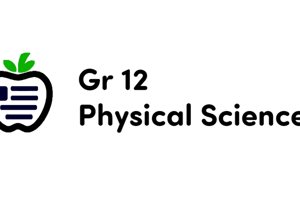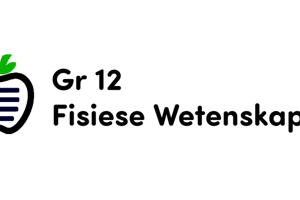Podcast
Questions and Answers
What type of reaction is combustion of alkanes classified as?
What type of reaction is combustion of alkanes classified as?
- Hydrolysis reaction
- Oxidation reaction (correct)
- Neutralization reaction
- Reduction reaction
Which law states that equal volumes of gases at the same temperature and pressure contain the same number of molecules?
Which law states that equal volumes of gases at the same temperature and pressure contain the same number of molecules?
- Boyle's Law
- Charles's Law
- Avogadro's Law (correct)
- Gay-Lussac's Law
In the combustion analysis of hydrocarbons, what happens to unreacted oxygen after the reaction?
In the combustion analysis of hydrocarbons, what happens to unreacted oxygen after the reaction?
- It contributes to the formation of water.
- It is measured after cooling. (correct)
- It remains unchanged.
- It is converted into carbon dioxide.
What product is formed when methane reacts with chlorine through free radical halogenation?
What product is formed when methane reacts with chlorine through free radical halogenation?
How many moles of oxygen are required to completely combust one mole of a hydrocarbon represented as CxHy?
How many moles of oxygen are required to completely combust one mole of a hydrocarbon represented as CxHy?
What ratio is typically considered when analyzing the reactions of higher alkanes during halogenation?
What ratio is typically considered when analyzing the reactions of higher alkanes during halogenation?
When performing combustion analysis, what is the purpose of passing the gas mixture through aqueous sodium hydroxide?
When performing combustion analysis, what is the purpose of passing the gas mixture through aqueous sodium hydroxide?
What is indicated by the volume decrease observed after the combustion of a hydrocarbon in a closed system?
What is indicated by the volume decrease observed after the combustion of a hydrocarbon in a closed system?
What is a characteristic of bromine in terms of selectivity compared to chlorine and fluorine?
What is a characteristic of bromine in terms of selectivity compared to chlorine and fluorine?
Which of the following reactions yields a higher product yield?
Which of the following reactions yields a higher product yield?
What diseases are believed to be contributed to by free radicals?
What diseases are believed to be contributed to by free radicals?
What is the role of free radicals in biological systems?
What is the role of free radicals in biological systems?
In the bromine reaction shown, which compound appears as a product when hydrogen reacts with bromine?
In the bromine reaction shown, which compound appears as a product when hydrogen reacts with bromine?
Which property affects the selectivity of bromine more than chlorine?
Which property affects the selectivity of bromine more than chlorine?
What type of reaction typically occurs when bromine reacts with alkane?
What type of reaction typically occurs when bromine reacts with alkane?
What is a common misconception about the selectivity of bromine compared to chlorine?
What is a common misconception about the selectivity of bromine compared to chlorine?
What is the purpose of determining the percent composition of a compound?
What is the purpose of determining the percent composition of a compound?
In the formula for percent composition, what does 'n' represent?
In the formula for percent composition, what does 'n' represent?
What type of reaction is free radical halogenation of alkanes?
What type of reaction is free radical halogenation of alkanes?
Which of the following describes the initiation step in free radical halogenation?
Which of the following describes the initiation step in free radical halogenation?
What is the result of dihalogenation in alkane halogenation reactions?
What is the result of dihalogenation in alkane halogenation reactions?
What differentiates more stable free radicals from less stable ones?
What differentiates more stable free radicals from less stable ones?
In the context of free radical halogenation, which halogen is most reactive?
In the context of free radical halogenation, which halogen is most reactive?
Which reaction type involves the replacement of two hydrogen atoms with chlorine in a single reaction?
Which reaction type involves the replacement of two hydrogen atoms with chlorine in a single reaction?
During the termination step of free radical reactions, what occurs?
During the termination step of free radical reactions, what occurs?
When calculating the empirical formula from percent composition, which of the following steps is first?
When calculating the empirical formula from percent composition, which of the following steps is first?
Flashcards
Alkane Reactivity
Alkane Reactivity
Alkanes are relatively unreactive due to their non-polar, covalent bonds. They do not readily react with most acids, bases, or reducing agents.
Alkane Combustion
Alkane Combustion
The reaction of an alkane with oxygen, producing carbon dioxide, water, and heat. It's an oxidation reaction.
Combustion Analysis
Combustion Analysis
A technique used to determine the molecular formula of a hydrocarbon. It involves reacting a known volume of hydrocarbon with oxygen, measuring the volumes of products and unreacted oxygen.
Gay-Lussac's Law
Gay-Lussac's Law
Signup and view all the flashcards
Avogadro's Law
Avogadro's Law
Signup and view all the flashcards
Combustion Analysis Equation
Combustion Analysis Equation
Signup and view all the flashcards
Combustion Analysis: Product Identification
Combustion Analysis: Product Identification
Signup and view all the flashcards
Combustion Analysis: Molecular Weight Determination
Combustion Analysis: Molecular Weight Determination
Signup and view all the flashcards
Free Radical Propagation
Free Radical Propagation
Signup and view all the flashcards
Free Radical Termination
Free Radical Termination
Signup and view all the flashcards
What is a Bromine Radical?
What is a Bromine Radical?
Signup and view all the flashcards
Halogenation Selectivity
Halogenation Selectivity
Signup and view all the flashcards
What is more selective, Chlorine or Bromine?
What is more selective, Chlorine or Bromine?
Signup and view all the flashcards
Free Radicals in Disease
Free Radicals in Disease
Signup and view all the flashcards
How do Free Radicals cause diseases?
How do Free Radicals cause diseases?
Signup and view all the flashcards
What are Free Radicals?
What are Free Radicals?
Signup and view all the flashcards
Percent Composition
Percent Composition
Signup and view all the flashcards
Empirical Formula
Empirical Formula
Signup and view all the flashcards
Molecular Formula
Molecular Formula
Signup and view all the flashcards
Free Radical Halogenation
Free Radical Halogenation
Signup and view all the flashcards
Initiation (Free Radical Halogenation)
Initiation (Free Radical Halogenation)
Signup and view all the flashcards
Propagation (Free Radical Halogenation)
Propagation (Free Radical Halogenation)
Signup and view all the flashcards
Termination (Free Radical Halogenation)
Termination (Free Radical Halogenation)
Signup and view all the flashcards
Multiple Substitution Reactions
Multiple Substitution Reactions
Signup and view all the flashcards
Free Radical Halogenation of Alkanes
Free Radical Halogenation of Alkanes
Signup and view all the flashcards
Stability of Alkyl Radicals
Stability of Alkyl Radicals
Signup and view all the flashcards
Study Notes
Organic Chemistry Lecture 4
- Lecture 4 covers reactions of alkanes, combustion analysis of hydrocarbons, free radical halogenation, reactions of higher alkanes, cycloalkanes, and double bond equivalents.
Reactions of Alkanes
- Alkanes are relatively inert due to non-polar covalent bonds.
- They do not readily react with most acids, bases, or reducing agents.
- Alkanes are frequently used as fuels, undergoing combustion to evolve heat, a process of oxidation where light and heat are released, like in the example of methane reacting with oxygen to produce carbon dioxide, water, and heat (CH4 + 2O2 → CO2 + 2H2O + heat).
Combustion Analysis of Hydrocarbons
- Gay-Lussac's Law states that volumes of gases in a chemical reaction are related numerically, if measured at standard temperature and pressure (STP).
- Avogadro's Law states equal volumes of gases at the same temperature and pressure contain equal numbers of molecules.
- Combustion analysis involves reacting a known volume of hydrocarbon with a known volume of oxygen. The volume of products and unreacted oxygen are measured after cooling.
- This method is used to determine the molecular weight of an alkane.
- Products from a hydrocarbon's combustion with oxygen include carbon dioxide and water.
Problem Question Example
- A problem provides a gaseous hydrocarbon with a known volume reacted with a volume of oxygen and results in an amount of residual gas with a given composition that was found to be carbon dioxide.
- The question requires the determination of the hydrocarbon's molecular formula.
Past Paper Question Example (1997)
- A gaseous hydrocarbon (X) with a volume of 15 cm³ is mixed with oxygen to a total volume of 145 cm³.
- After combustion, the residual volume is 100 cm³.
- One-fourth of the gas remains after passing through aqueous sodium hydroxide.
- This problem asks for the molecular formula (given the measurements were done at STP with 10 marks).
Determination of Molecular Formulae using Percent Composition
- Percent composition (by mass) of elements in a sample can be experimentally determined, helping calculate empirical and molecular formulas.
- The empirical formula shows the relative proportions of elements but not the actual number of atoms. Calculating percent composition values is done by multiplying the element's molar mass by the number of atoms of the element, divided by the molar mass of the compound, multiplied by 100%.
Example Problem (December 2000)
- A liquid hydrocarbon (G) is composed of 12.27% hydrogen. Find the molecular formula.
Free Radical Halogenation
- Reaction of Methane with Chlorine involves three steps: initiation, propagation, and termination.
- Free radical halogenation reactions produce different products with varying stability, like 1°, 2°, and 3° methyl, as seen in the product ratios.
Multiple Substitution Reactions
- Illustrates halogenation substitution, including steps of monohalogenation, dihalogenation, trihalogenation, tetrahalogenation.
Reaction with Alkanes (Free Radical Halogenation)
- Reactions are initiated by light or heat; halogen-alkanes are produced.
- The reaction products depend on the stability of radicals (1° < 2° < 3°). Fluorine reactions are explosive; chlorine/bromine reactions require light or heat; iodine is unreactive.
Mechanism of Free Radical Halogenation
- Explains the different steps in initiation, propagation, and termination.
Reaction Selectivity
- Bromine halogenation is more selective than chlorine or fluorine halogenation. Different product yields arise from selective substitutions.
Free Radicals in Diseases
- Free radicals are involved in various diseases, affecting biological substances, including cancer, strokes, Alzheimer's, rheumatoid arthritis, Parkinson's disease, and cataracts.
Past Paper Question (July/August 2004)
- 2-Methylpropane reacted with bromine under light conditions is examined.
- The question requires determining why there's a higher yield of 2-bromo-2-methylpropane by outlining the reaction mechanism, properly annotating each step, all with 15 marks.
Cycloalkanes
-
Saturated hydrocarbons with a cyclic structure of carbon atoms.
-
They follow the formula CnH2n.
-
Named by adding "cyclo" before the corresponding alkane name, e.g., cyclopropane, cyclohexane.
Cis-Trans Isomerism
- Cycloalkanes can exhibit cis-trans isomerism.
- Cis isomers have similar groups on the same side of the ring, while trans isomers have similar groups on opposite sides.
Double Bond Equivalents (DBE)
- DBE provides a measure of unsaturation/saturation in an organic compound.
- It counts double bonds or rings in an organic compound.
Calculation of DBE
- The formula is used to calculate DBE values for given hydrocarbon and halogenated compounds.
Next Lecture:
- Alkenes: bonding, geometric isomerism, and preparation methods.
Studying That Suits You
Use AI to generate personalized quizzes and flashcards to suit your learning preferences.




